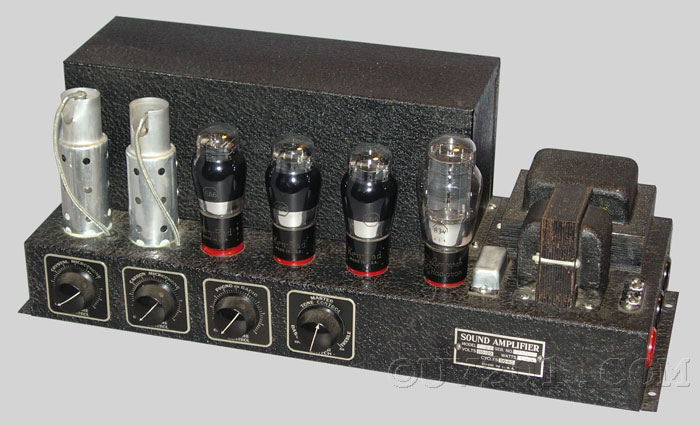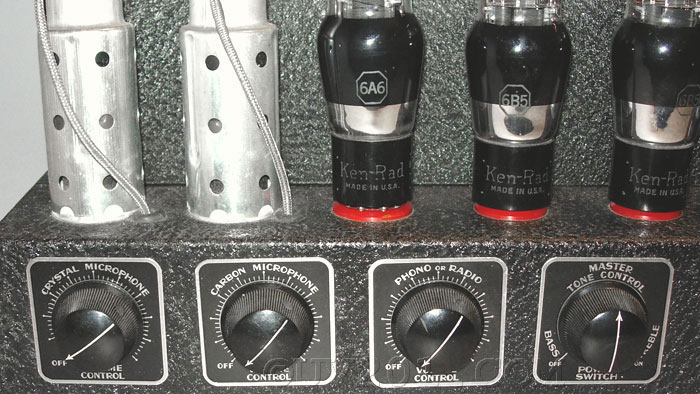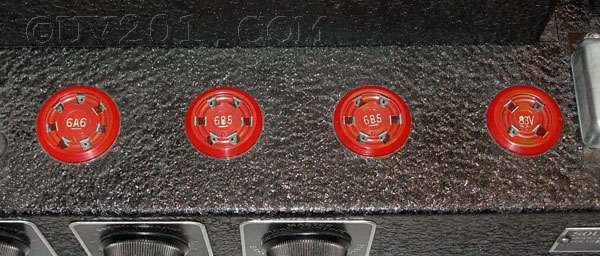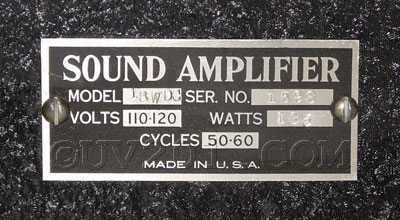|
1930's Public Address Amplifier |
 |
| This
amplifier was part of a portable public address system which was made
in 1935. There is no manufacturer's name on it anywhere.
The name plate simply identifies it as a "sound amplifier", and the
model number is 18WDC. I believe this means that it had a power
output of 18 watts (18W) and used a direct-coupled (DC) circuit. Amplifiers like this one can be seen in the catalogs of many mail order radio equipment sellers of the 1930's. They were located in sections of cities like New York's "Radio Row", and some had small manufacturing operations in the back rooms and basements where amplifiers like these were built. The amplifier has inputs for either a carbon or crystal microphone, and a phonograph pickup. It was designed to drive from one to three electrodynamic (field-coil) speakers, which connect to the three sockets at the right side of the chassis. It uses a pair of 6B5 tubes in the output stage, transformer coupled to a 6A6 dual triode driver. A type 79 dual triode provided amplification for the carbon and phonograph inputs, and a 6C6 pentode was devoted to the crystal microphone input. A type 83-V was the rectifier. The 6B5 is a strange tube. It is a dual triode, but the cathode of the first triode is internally connected to the grid of the second triode (the "direct-coupled" feature implied by the model number), and has no external connection. The first triode operated as a cathode follower. The second triode was actually a tetrode (two grids), but the grids were connected together internally. Why they did this is a mystery. The tube was introduced in 1935, and was not widely used. The 6B5 was a member of a small family of tubes which included the 291, 293, 295, 2B6, 6N6, and some others which used this direct-coupled configuration with both triodes in one tube. Some single triodes were designed to be used in this type of circuit, such as the 6AE5 (as the driver) and the 6AC5 (as the output). A prominent feature of this amplifier is the large black box at the rear of the chassis. While it looks impressive, it is almost entirely empty inside. It hides the carbon microphone input transformer and two filter capacitors, but has no other apparent function other than appearance. This "black box" is commonly seen on amplifiers of the day. I wonder how many of them were just as empty as this one? Another interesting visual feature are the tube sockets made of red Bakelite. I have never seen them used on any radio or any other amplifier. This amplifier was housed in a suitcase-like speaker cabinet that also had storage locations for a carbon microphone, a floor stand, and a desk stand. |
 |
 |
 |